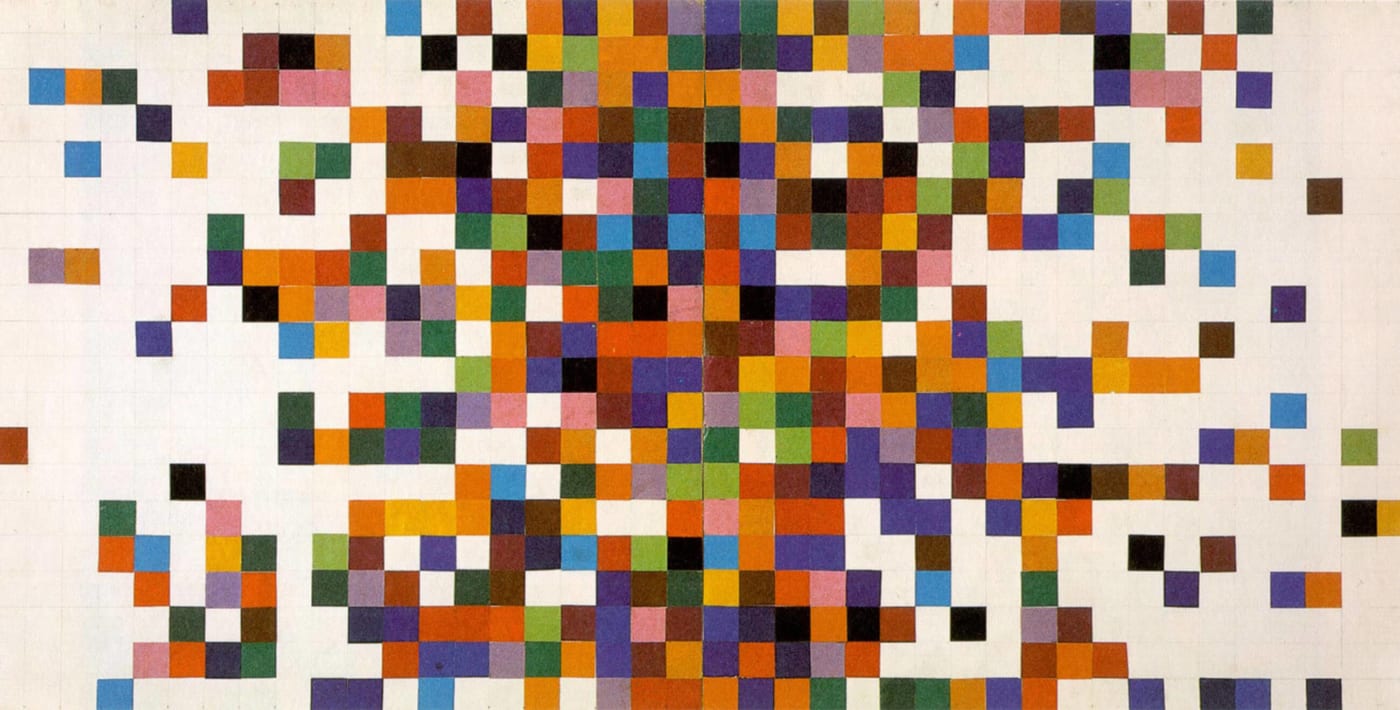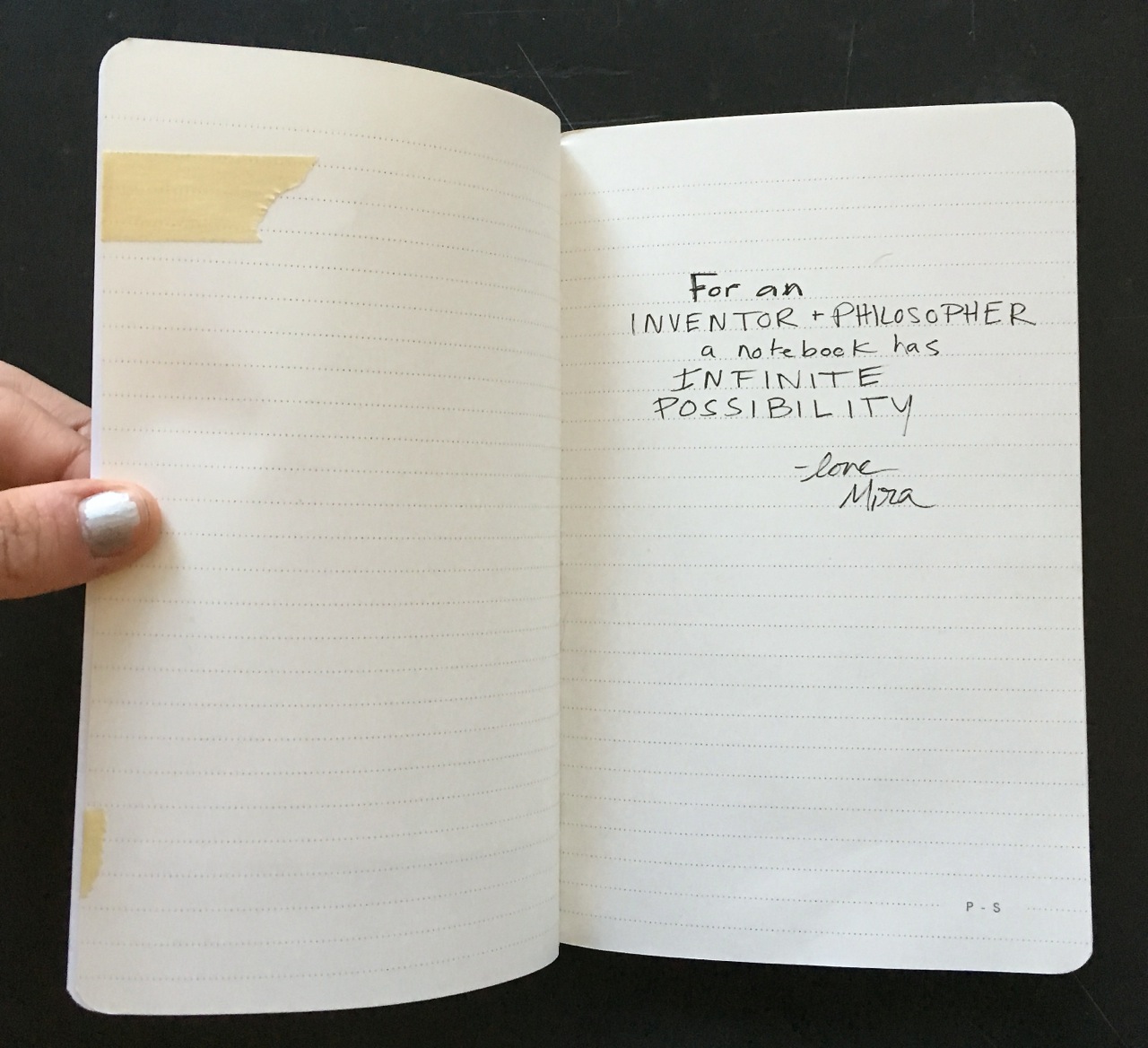A friend emailed us photographs she took at The Art of Collage and Assemblage on view at the Philadelphia Museum of Art, along with this message: The whole show is taking a page from your handbook highlighting works that use ‘everyday, non-art materials…to provoke imaginative, even visionary, thoughts and associations.” The bold text quote is from the exhibition’s wall text.
Although only a portion of the works are online, we were amazed at what we saw.
We had not stopped to think that Ellsworth Kelley’s iconic Spectrum of colors arranged by chance (above) was in fact, a collage of coated and uncoated colored papers over graphite grid on two joined sheets of wove paper.
…That Warren Rohrer’s beautiful minimalist Grass Drawing was composed of field grass adhered over colored pencil and white opaque paint on illustration board…
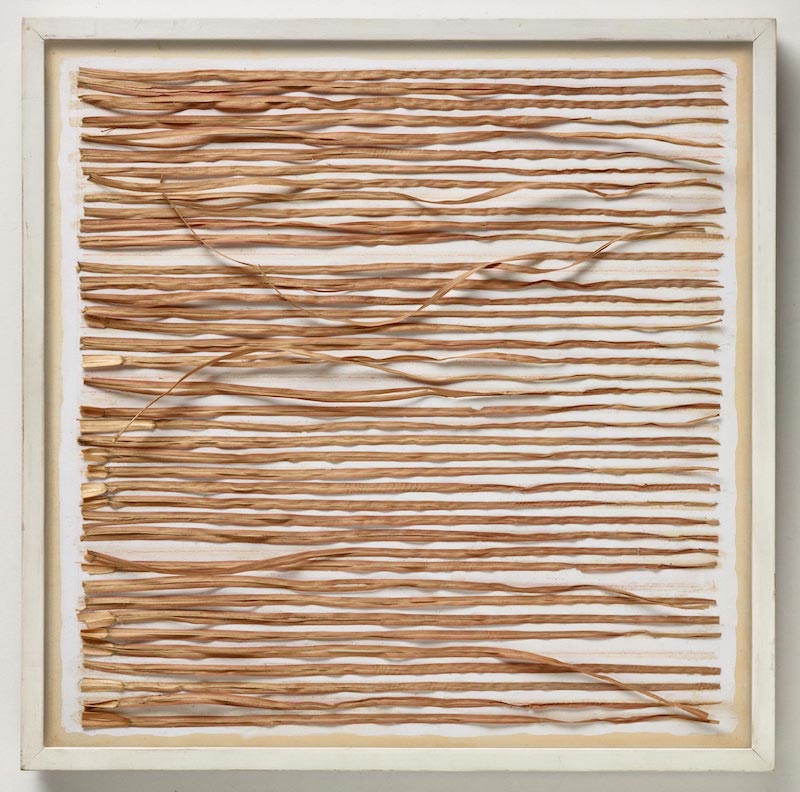
…That Robert Raushenberg’s Cardbird II is an assemblage of corrugated cardboard with relief printing and photomechanical prints, strapping tape, string and paper tags, and porous point marker…
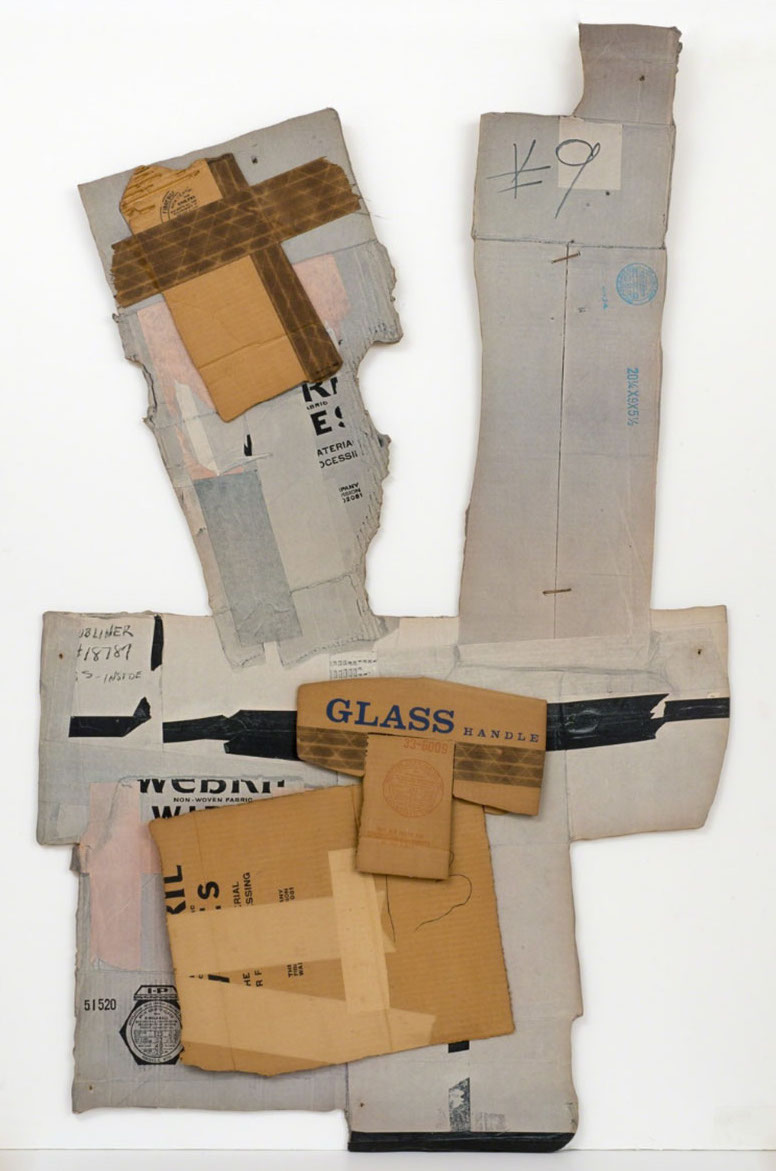
We learned that Kurt Schwitters’ construction was one of his Merz, an artform that included poetry, graphic design, and sculpture that celebrate the potential of leftover materials while blurring the boundary between art and life.
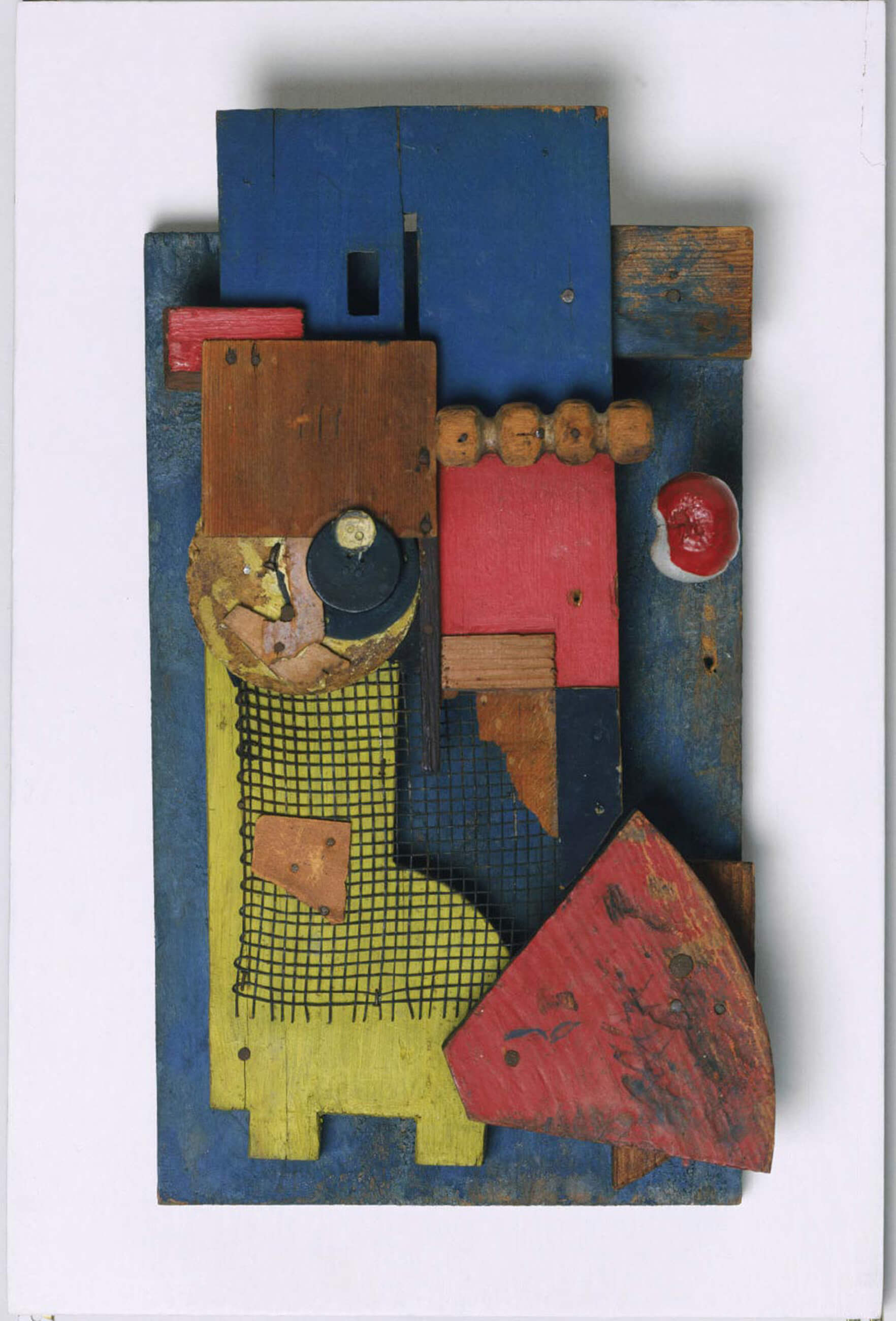
There are works by Picasso, Joseph Cornell and Romare Bearden, elaborate and intricate collages, and John Cage’s Wild Edible Drawing #3 composed of kudzu, hibiscus stems, cattail, yellow dock, barley, eucommia, clove with a recipe based on the I Ching, an ancient Chinese book of divination. You can view them here.
But it was the ordinariness of many of the materials used that we found so moving: cardboard, wire, field grass, paper, cigar labels, hibiscus stems, cigar labels, silk flowers, oyster shells, sand, playing cards, mirrored glass shards and a French farming manual. And just…paper.
A companion exhibition Souls Grown Deep: Artists of the African American South includes quilters from Gee’s Bend, Alabama, who are famous for their arresting compositions made from worn-out clothes and other repurposed fabrics. What is quilting if not collage?
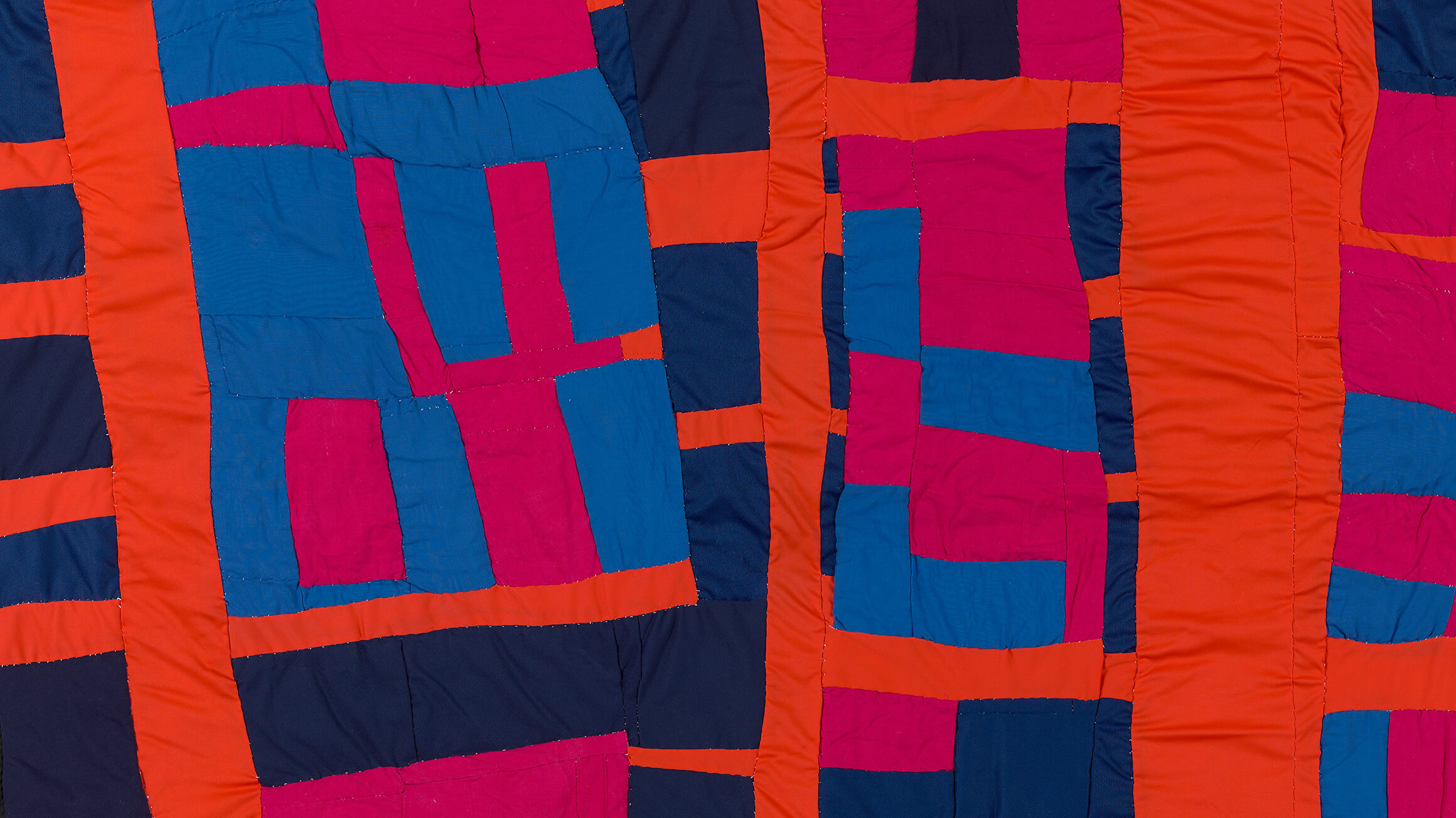
From the 1961 monograph The Art of Assemblage from MOMA, we clipped this amazing assemblage of ordinary household utensils glued to a wooden board…
It got us thinking about the arrangements of objects that happen daily, and how collage might help us notice them, or vice versa.
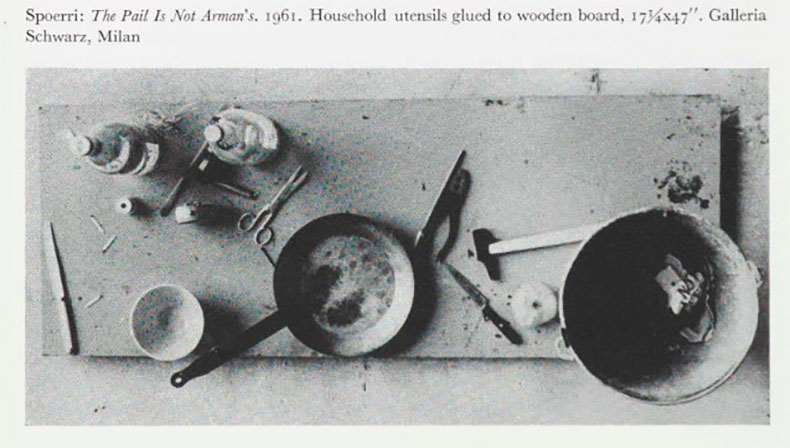
(There is poetry created from words cut out of newspapers or other printed matter that are drawn randomly and assembled, a technique famously used by the Dadaists, William Burroughs and David Bowie…)
We have a friend who says once she lays out paper to make collages, she can get lost for hours in the work. She describes is as dreamy, restful, meditative, absorbing…
With big thanks to Maureen Rolla!

